Currently, only about 20 human communities around the world permanently live at elevations above 14,800 feet. Only about 2% of the world’s human population permanently lives above 8,200 feet. Indeed, those not used to existing in high elevations must carefully acclimate to conditions above 8,000 feet. However, several animal species thrive in elevations where most humans struggle to function. These animals successfully carve out their existence in environments that are not teeming with life but at which life does endure for a relative few.
In this guide, we’ll discuss the incredible lives of 11 extremely high-altitude animals. Read on to learn more.
11. High-Altitude Animals: Guanaco (Lama guanicoe)- Up to 13,000 Feet
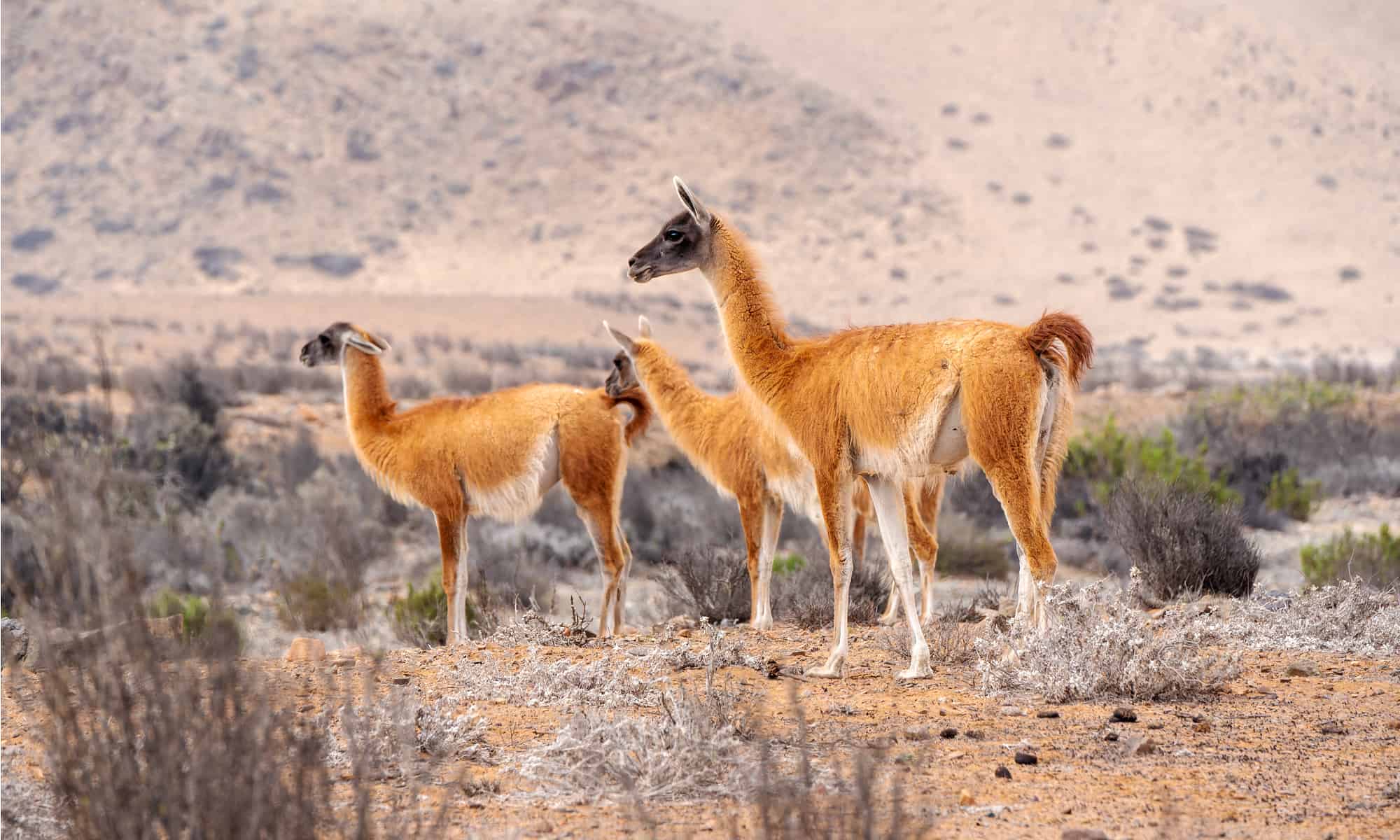
The guanaco lives in the Andes mountains up to 13,000 feet above sea level.
©oscargutzo/Shutterstock.com
The wild relative of domesticated llamas, the guanaco (Lama guanicoe), thrives in the Andes Mountain range at elevations up to 13,000 feet. With a wide-ranging diet, guanacos can endure their high-elevation environment year-round. The giant wild herbivores living in arid regions of the Andes eat grasses, shrubs, lichen, fungi, succulents, fruit, and flowers.
10. Sierra Nevada Bighorn Sheep (Ovis canadensis sierrae)- Up to 14,000 Feet
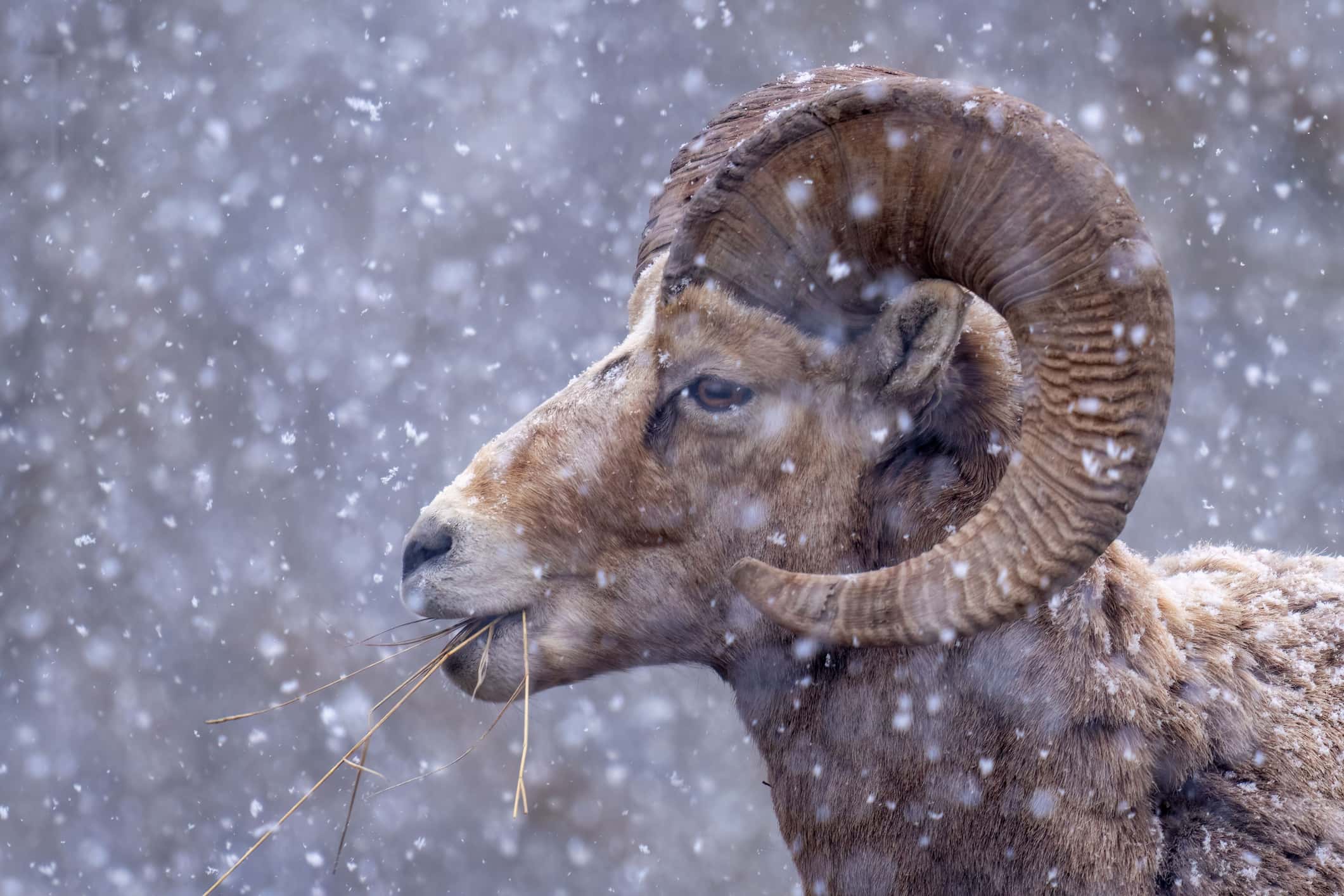
Experts at navigating steep, precarious terrain, Sierra Nevada
bighorn sheep
are also masters of living at high elevations up to 14,000 feet.
©Wirestock/iStock via Getty Images
A subspecies of the bighorn sheep (Ovis canadensis) and the Sierra Nevada bighorn sheep (Ovis canadensis sierrae) are endemic to California’s Sierra Nevada mountains. These impressive ungulates can thrive in harsh, rocky environments up to 14,000 feet. They typically move to these higher elevations in the summer to access alpine vegetation.
9. High-Altitude Animals Ethiopian Wolf (Canis simensis)- Up to 14,800 Feet
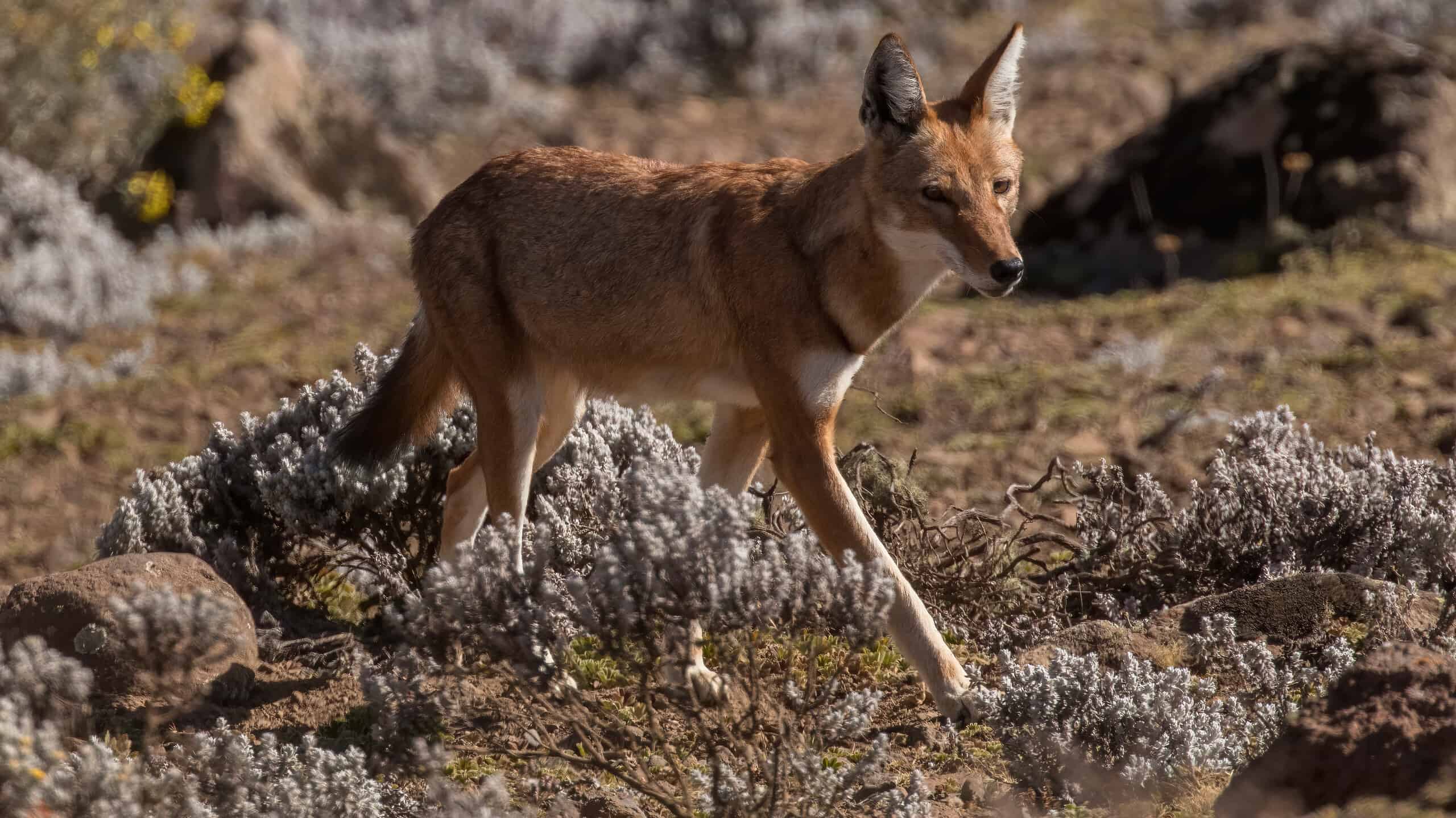
The Ethiopian wolf lives in the Ethiopian highlands at elevations up to 14,800 feet.
One of the rarest wild canines on Earth, the Ethiopian wolf (Canis simensis), lives only in seven isolated mountain ranges of the Ethiopian highlands. There, they can thrive up to 14,800 feet in elevation.
The IUCN lists this high-altitude canine endangered due to its small population and fragmented range. The most significant threats to this fantastic animal are pressures from human activities, habitat degradation from livestock and agricultural activities, and disease acquisition from and interbreeding with free-ranging dogs.
8. The Himalayan Pit Viper (Gloydius himalayanus)- Up to 16,100 Feet
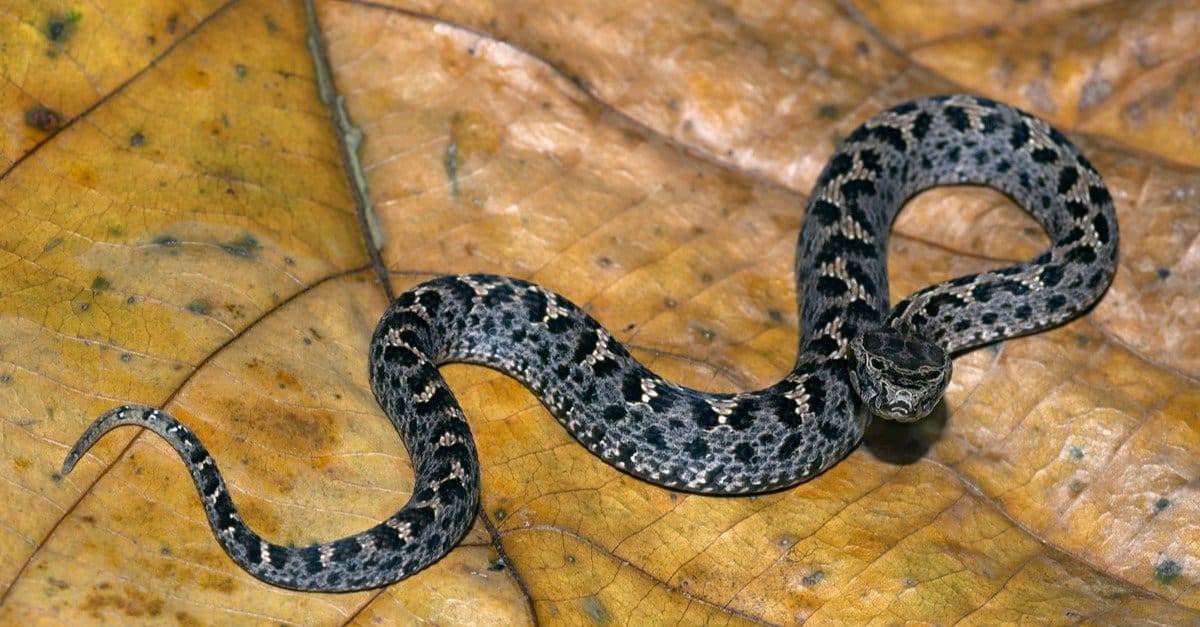
The
Himalayan
pit viper, which can thrive at altitudes up to 16,100 feet, is currently the highest-living snake ever recorded.
©iStock.com/ePhotocorp
This pit viper (Gloydius himalayanus) is the highest-living snake ever recorded. This venomous snake can live at altitudes up to at least 16,100 feet. Only a few reptile taxa survive in elevations above 15,000 feet. To thrive here, the Himalayan pit viper has evolved adaptations to combat consistent cold, low oxygen availability, and increased UV radiation.
7. High-Altitude Animals: Andean Condor (Vultur gryphus)- Up to 16,400 Feet
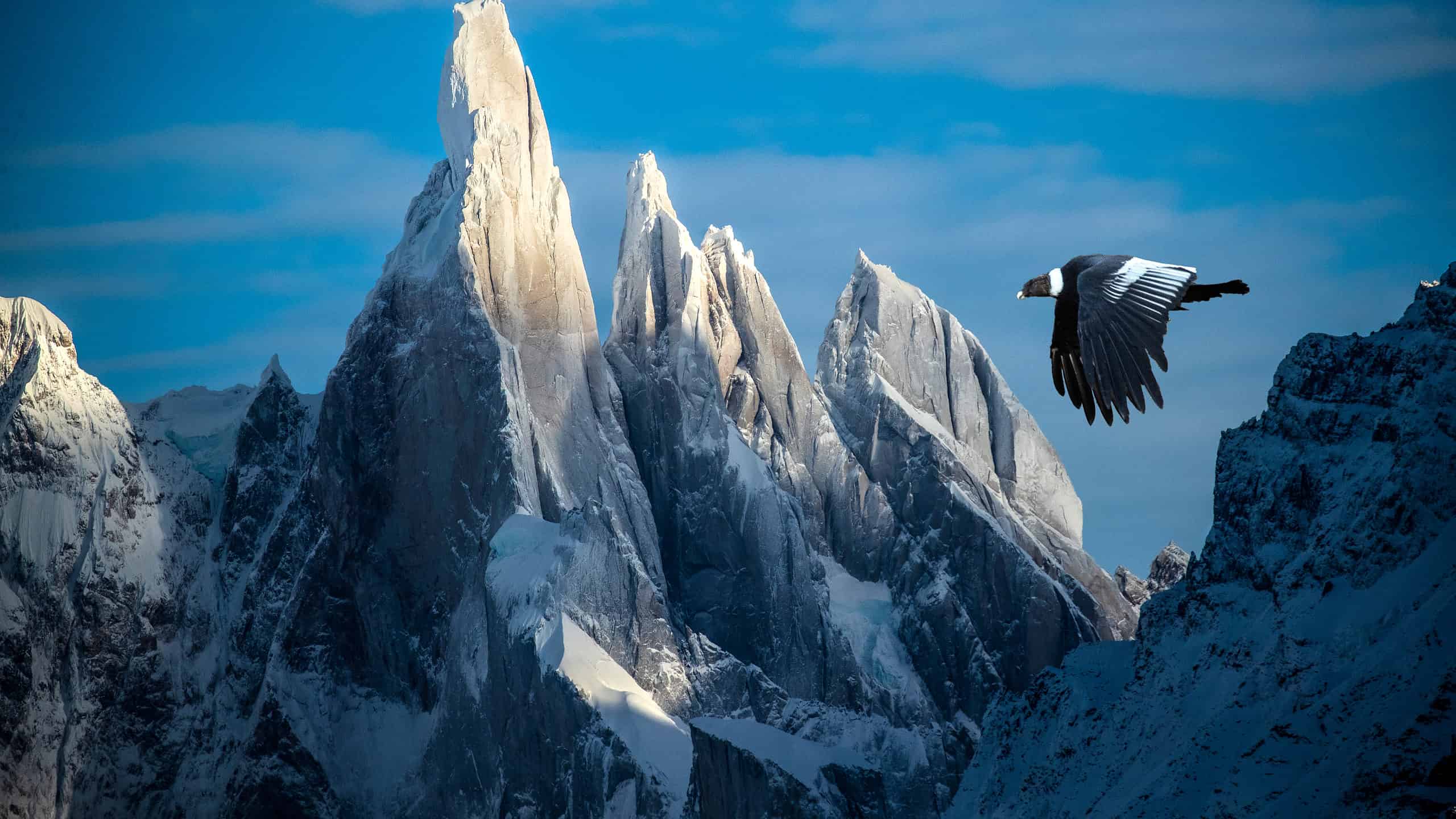
The impressive Andean condor roosts up to 16,400 feet in elevation.
©Danita Delimont/Shutterstock.com
A South American vulture, the Andean condor (Vultur gryphus) is the only member of the Vultur genus and lives at high elevations throughout the Andes Mountains. These social birds often roost together at elevations up to 16,400 feet on rocky outcrops and cliffs. At these heights and along impossibly steep mountainsides, these large birds can keep their young safe from potential predators.
6. Liolaemus aff. tacnae– up to 17,720 Feet
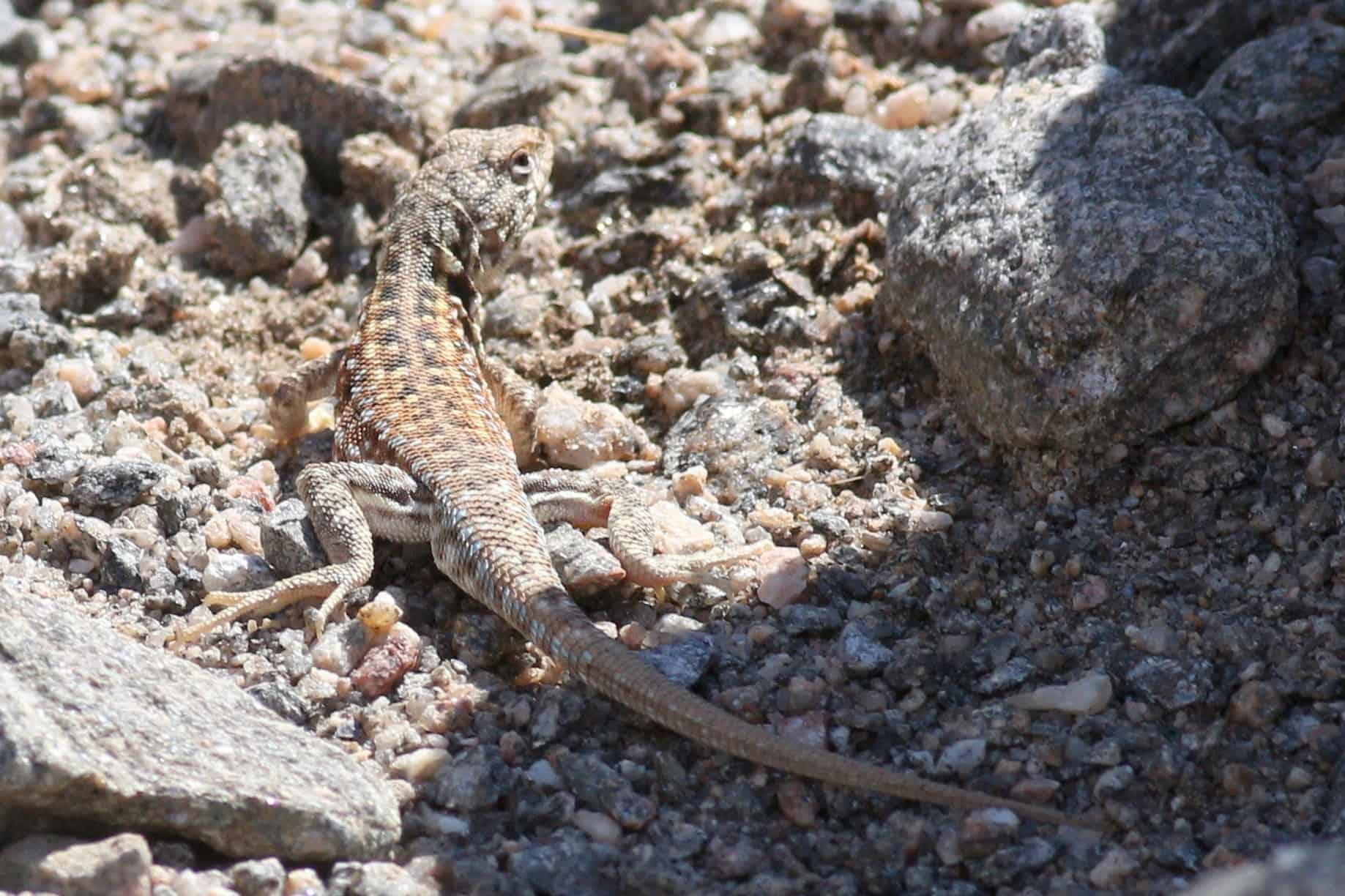
Living up to 17,720 feet in elevation, the current record for the highest-living reptile goes to
Liolaemusaff.
tacnea, who appears similar to the pictured
Liolaemus quilmes,
In 2020, researchers climbed the summit of the Chachani Mountain in southwestern Peru. At roughly 17,720 feet in elevation, they documented evidence of lizards in the Liolaemus genus living in the barren, rocky environment.
Due to the lizards’ similarities with Liolaemus tacnae, the species is tentatively named Liolaemus aff. tacnae. This species is now considered the highest-living species of reptile in the world. It surpasses an earlier record set by the documentation of the toad-headed sand lizard (Phyrnocephalus erythrurus) living at about 15,000 feet on the Tibetan Plateau.
5. High-Altitude Animals: Snow Leopard (Panthera uncia)- Up to 18,000 Feet

Snow leopards can thrive at elevations up to 18,000 feet in the Himalayan Mountains.
©Asmakhan992/Shutterstock.com
The highest-living big cats in the world, snow leopards inhabit snow-covered, mountainous regions of central and northern Asia. Their range includes the Himalayas, where they can live up to 18,000 feet in elevation.
Interestingly, scientists still don’t know how snow leopards are so well adapted to their lower-oxygen environments. A 2015 study revealed that, to the researchers’ surprise, snow leopards haven’t evolved modifications of hemoglobin function that would allow increased movement of oxygen throughout the bloodstream. Researchers are still searching for a different modification of the oxygen transport pathway that would enable snow leopards to thrive at extremely high elevations.
4. Tibetan Argali (Ovis ammon)- Up to 19,000 Feet

The Tibetan argali lives up to 19,000 feet in elevation across the Tibetan Plateau.
©alex_kz/iStock via Getty Images
The rarest wild sheep, the Tibetan argali (Ovis ammon hodgsoni), roam the Tibetan Plateau at elevations up to 19,000 feet. Currently, the IUCN lists this subspecies of argali as endangered. Tibetan argali are incredibly hardy and feed on various grasses, herbs, sedges, and shrubs, depending on their availability. Ewes and lambs often live on precarious, steep terrain to avoid predators. Rams tend to prefer gentler slopes with more grazing opportunities.
3. High-Altitude Animals: Large-Eared Pika (Ochotona macrotis)- Up to 20,100 Feet
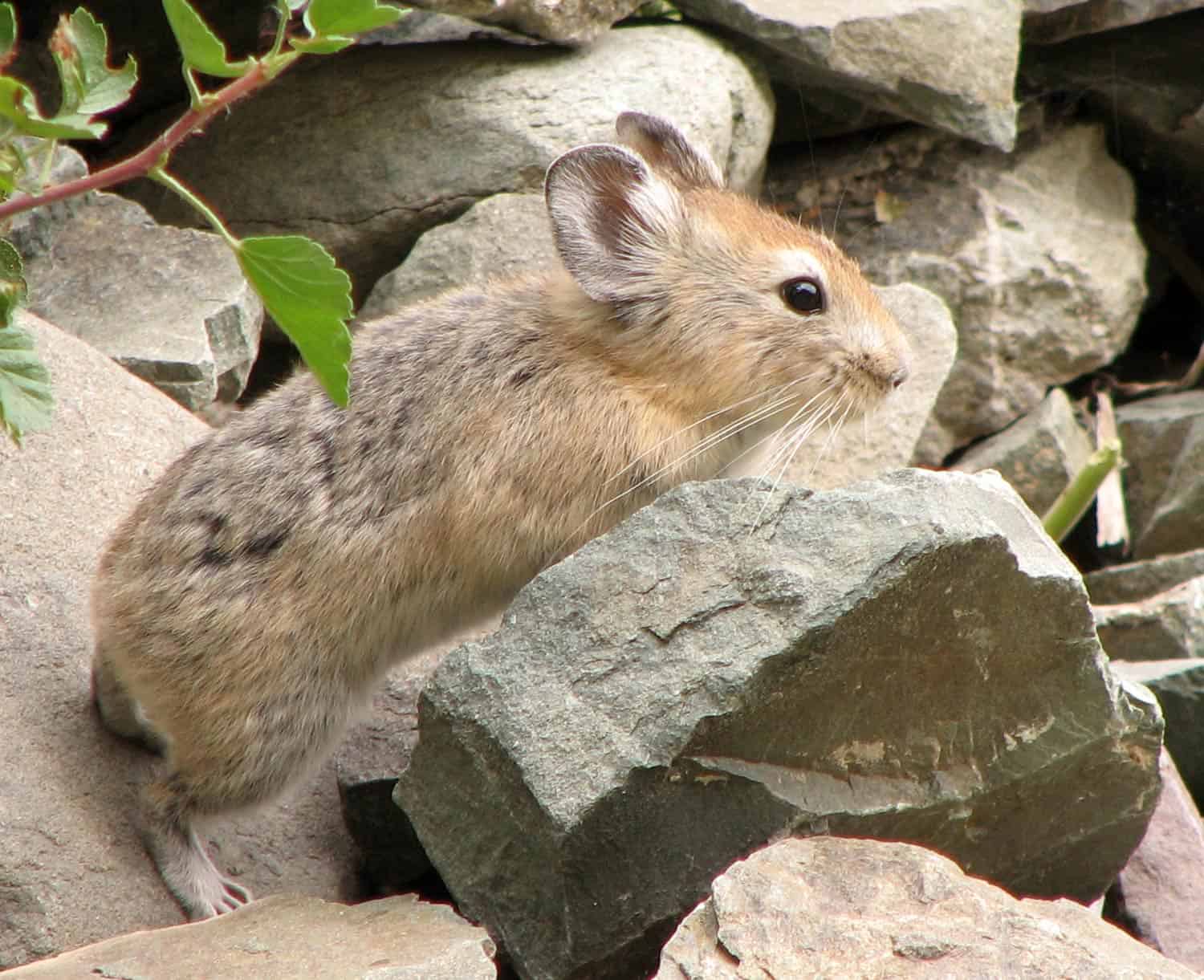
The large-eared pika can thrive in mountainous regions of Central Asia up to 20,100 feet in elevation.
Thriving at 20,100 feet, the large-eared pika is one of the highest-dwelling mammals on Earth. This adorable critter lives across mountainous regions of Central Asia, including the Himalayas. Close cousins to rabbits, pikas are lagomorphs. Across their high-elevation environments, these incredibly resilient mammals munch on whatever edible vegetation they can find.
2. Himalayan Jumping Spider (Euophrys omnisuperstes)- Up to 22,000 Feet

The Himalayan jumping spider can thrive at elevations up to 22,000 feet!
The title of the highest-dwelling spider on Earth currently goes to the adorable Himalayan jumping spider (Euophrys omnisuperstes). Able to thrive up to 22,000 feet in elevation, this tiny jumping spider lives among rocks, snow, and ice and preys on tiny springtails and flies. They hide under rocks for protection, only coming out when the sun is shining and to hunt. Likely, their ability to spin silken, sleeping-bag-like cells beneath rocks aids in their survival in the extremely high elevations of the Himalayas.
1. Yellow-Rumped Leaf-Eared Mouse (Phyllotis xanthopygus rupestris)- Up to 22,110 Feet

The yellow-rumped leaf-eared mouse currently holds the title of the highest-living mammal on Earth.
The title of the highest-living mammal ever recorded currently goes to the yellow-rumped leaf-eared mouse (Phyllotis xanthopygus rupestris). In 2020, researchers documented this little mouse thriving on the summit of Volcan Llullaillaco in Chile at an astounding 22,110 feet in elevation. One adaptation that allows the yellow-rumped leaf-eared mouse to succeed at such extreme elevations is its non-specialist diet. This mouse will eat various vegetation, fruits, insects, grains, nuts, seeds, and roots.
Summary of 11 of the Highest-Living Animals
| Rank | Animal | Elevation |
|---|---|---|
| #11. | Guanaco (Lama guanicoe) | up to 13,000 feet |
| #10. | Sierra Nevada Bighorn Sheep (Ovis canadensis sierrae) | up to 14,000 feet |
| #9. | Ethiopian Wolf (Canis simensis) | up to 14,800 feet |
| #8. | The Himalayan Pit Viper (Gloydius himalayanus) | up to 16,100 feet |
| #7. | Andean Condor (Vultur gryphus) | up to 16,400 feet |
| #6. | Liolaemus aff. tacnae | up to 17,720 feet |
| #5. | Snow Leopard (Panthera uncia) | up to 18,000 feet |
| #4. | Tibetan Argali (Ovis ammon) | up to 19,000 feet |
| #3. | Large-Eared Pika (Ochotona macrotis) | up to 20,100 feet |
| #2. | Himalayan Jumping Spider (Euophrys omnisuperstes) | up to 22,000 feet |
| #1. | Yellow-Rumped Leaf-Eared Mouse (Phyllotis xanthopygus rupestris) | up to 22,110 feet |
The photo featured at the top of this post is © Danita Delimont/Shutterstock.com
Thank you for reading! Have some feedback for us? Contact the AZ Animals editorial team.







